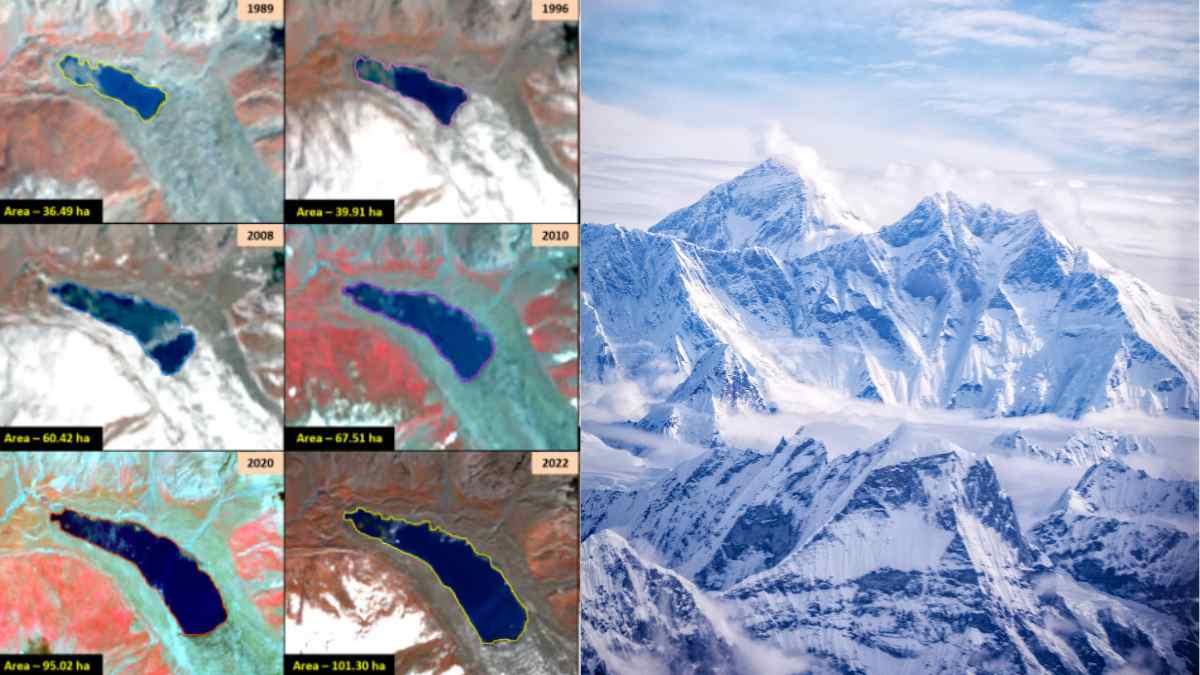The Indian Space Research Organisation (ISRO) has raised concerns globally with its recent satellite images. The images show the significant expansion of glacial lakes in the Himalayas over the past three to four decades. As per ISRO’s data, around 600 lakes which amount to 89 per cent of the total glacial lakes atop the Himalayas have expanded over two times their size in the past 30 to 40 years. Here’s more to it.
ISRO: New Satellite Images Show Expansion Of Glacial Lakes In The Himalayas

According to a report by Zee News India, the latest satellite images show a whopping 178 per cent increase in Ghepang Ghat glacial lake (Indus River Basin) between 1989 and 2022. Nestled at an elevation of 4,068 m in Himachal Pradesh this glacial lake is increasing by 1.96 hectares per year. From 36.49 hectares in 1989, the lake now measures 101.30 hectares in 2022.
The Himalayan Mountains are often called the Third Pole. This is because of the glaciers and snow cover. Whether it’s the physical characteristics or their societal impacts, the Himalayan Mountains are highly sensitive to changes in the global climate. Studies and research across the world have shown that glaciers have been in constant threat of thinning and retreat ever since the Industrial Revolution in the 18th century.
The retreat of glaciers leads to the formation of new lakes and further expansion of existing ones in the Himalayan region. These bodies of water or glacial lakes are created due to the melting of glaciers. They play an important role as freshwater sources in the Himalayan region.
Also Read: From The Himalayas To The Hindu Raj, 10 Highest Mountain Ranges On Earth
Expanding Lakes Pose Risks Of Floods

Apart from being new freshwater sources for lakes, these freshwater lakes also pose a lot of risks. One significant risk is the Glacial Lake Outburst Floods (GLOFs). This can cause devastating consequences for communities living downstream. When natural dams fail, glacial lakes release large volumes of meltwater downstream. It leads to sudden and severe flooding downstream, stated ISRO.
Also Read: Mountain Reading, Anyone? 7 Bookstores In The Himalayas All Bibliophiles Must Visit Once
Dam failures occur due to avalanches of rock or ice and extreme weather events. However, monitoring and studying the cause of glacial lakes in the Himalayan region is difficult due to the rugged terrain and its inaccessibility. As per ISRO’s elevation-based analysis, 314 lakes are located in the 4000 to 5000m range. There are 296 lakes located above 5000m elevation. Such analyses offer valuable insights to understand the glacial lake dynamics. This is necessary to manage GLOF risk and climate change adaptation in glacial environments.
What do you think about ISRO’s concerning satellite images?
Cover Image Courtesy: ISRO and Canva Pro
For more such snackable content, interesting discoveries and the latest updates on food, travel and experiences in your city, download the Curly Tales App. Download HERE.




